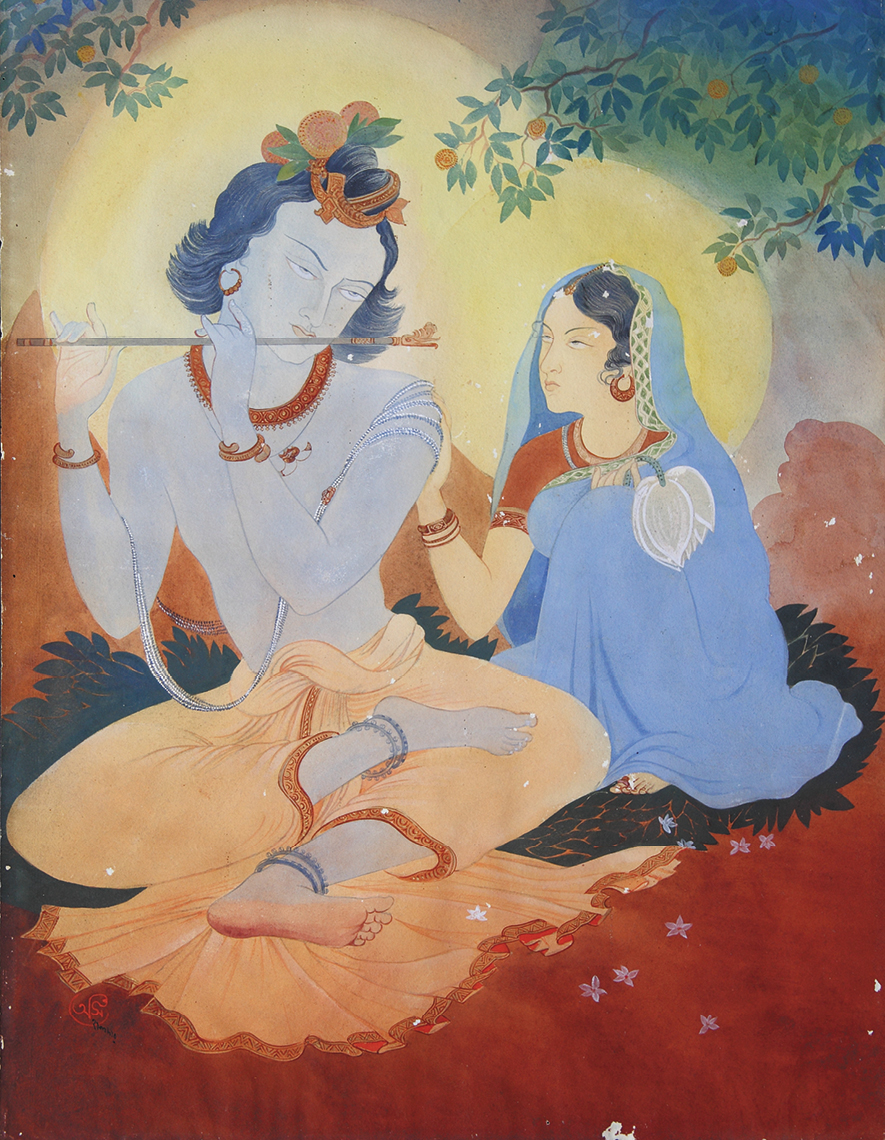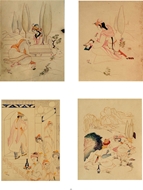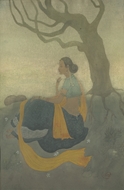![]() Fine Art, Design & Lifestyle
Fine Art, Design & Lifestyle
![]() Fine Art, Design & Lifestyle
ASIT KUMAR HALDAR (1890 - 1964)
Fine Art, Design & Lifestyle
ASIT KUMAR HALDAR (1890 - 1964)
RELATED LOTS
CONTACT US
Catalogue & Viewing
Lot Closed
Accounts & Shipping
Lot Closed
-
Provenance
 Provenance
Provenance
This painting was gifted by the artist to Dr. Rai Rajeshwar Bali*, a good friend of the artist and grandfather of the present owner
*Dr. Rai Rajeshwar Bali (1889–1944) was the Taluqdar of Daryabad, which was a princely state in North India and is now part of the state of Uttar Pradesh. An intellectual reformist, Dr. Bali headed the Taluqdar association of Oudh and served as education minister of UP from 1924 to 1928. His main contributions were the passage of the Agra University act, the establishment of the Montessori system of education in India, and being one of founding members of the Colvin Taluqdars’ College. Dr. Bali also set up one of India’s first music colleges, the Bhatkhande College of Hindustani Music in Lucknow, thus bringing Hindustani classical music to the public
-
Literature
 Literature
Literature

The extra large haloes surrounding Radha and Krishna highlight this very tender and romantic setting that could only be in paradise. Krishna plays the eternal love song on his flute as Radha sits compassionately beside him, her gaze saying it all from limitless adoration to unconditional worship. Asit Kumar Haldar captures the tenderness of their relationship that is clearly palpable in the warmth of the colours. Drawing upon the rich narrative of Indian mythology and Hindu religion, Haldar’s work whether in oil, tempera or watercolours, exhibits a strong spiritual bend and it is this that brought him to the notice of the public and the critics. A versatile artist, he worked with ease as a painter and a sculptor and was equally proficient at composing songs, writing poetry, books and numerous essays for leading periodicals.
The grand nephew of Rabindranath Tagore, Haldar, born in 1890, began painting at a very young age. He later trained at the Government School of Art, Calcutta. From 1909 to 1911 he went to Ajanta on an expedition with Lady Herringham and in conjunction with two other Bengali painters, documented the murals there. From 1911 to 1915, he taught at Shantiniketan and was also the Principal of the Kala Bhavan School till 1923, assisting Tagore with cultural and artistic activities.
In 1923 he visited Europe. The visit was an awakening for this intelligent and seeking artist. Realizing the limitations of Realism in European art he shifted his entire focus to qualities that went into the making of the Bengal School of Art. He epitomized its virtues and became one of its greatest practitioners. He also turned to folk painters and artistes for inspiration and studied the works of greats such as Jhareshwar Chakravarthi, Jadhunath Pal and Bakkeshwar Pal, in an attempt to embrace idealism in his art. To complete his education, Haldar studied sculpture from Leonard Jennings, the then government architect and sculptor.
-
Condition
 Notes
Notes
 Small tear at bottom. Minute paint loss in few areas
Small tear at bottom. Minute paint loss in few areas


